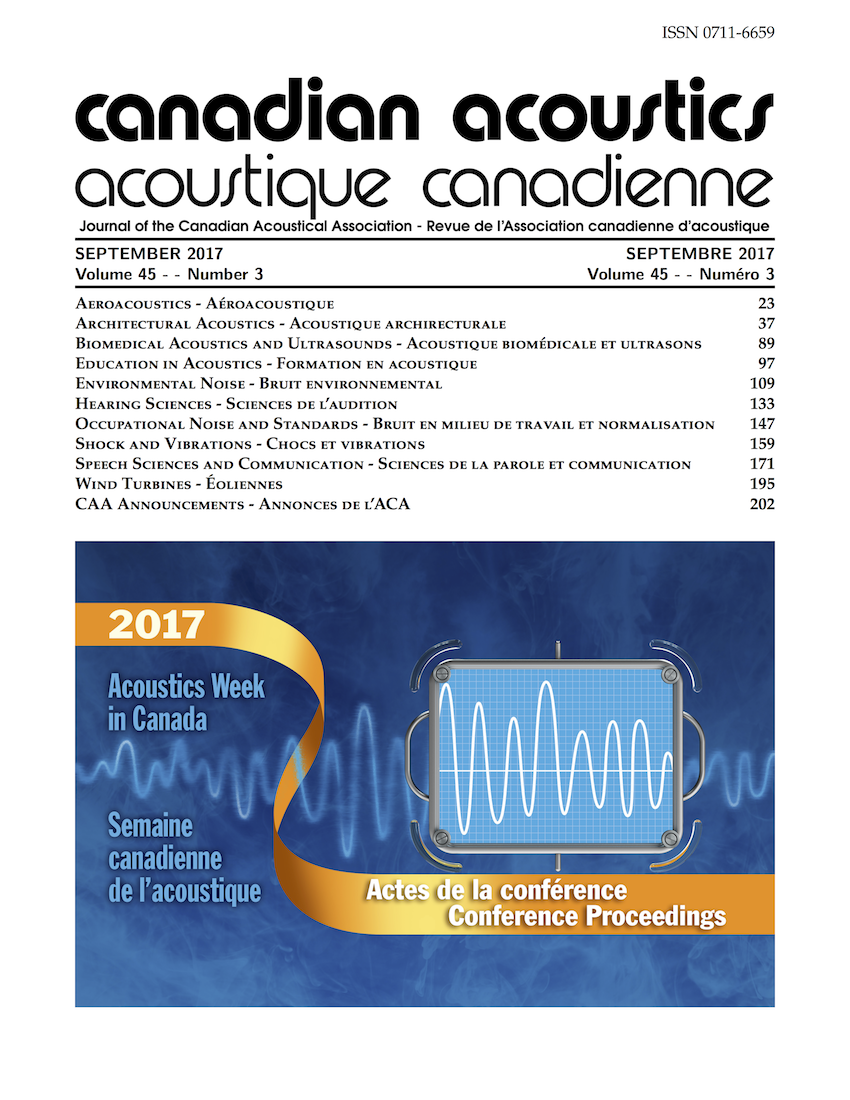Hearing protector fit-testing: spectrum uncertainty budgets
Abstract
Hearing protection devices (HPD) are widely used to protect workers exposed to dangerous levels of noise. Their effective attenuation can nowadays be routinely assessed using Field Attenuation Estimation Systems (FAES), colloquially referred to as fit-test systems. FAES typically rely on the Personal Attenuation Rating (PARx%), a single number factoring in the attenuation obtained at the seven octave band frequencies from 125 to 8000 Hz, and accounting for the spectrum uncertainty component resulting from the different attenuation profiles of HPDs across these frequencies. In the current study, this spectrum uncertainty has been computed, for many types of HPDs, from various published laboratory datasets, including the NIOSH Hearing Protector Device Compendium. The study includes a detailed spectrum uncertainty budget for the various categories of earplugs (roll-down foam, premolded, formable, push-to-fit, custom molded, etc.), semi-inserts and earmuffs. These values have been expressed at the 95th percentile for a direct use in the upcoming ANSI S12.71 standard on FAES.Additional Files
Published
How to Cite
Issue
Section
License
Author Licensing Addendum
This Licensing Addendum ("Addendum") is entered into between the undersigned Author(s) and Canadian Acoustics journal published by the Canadian Acoustical Association (hereinafter referred to as the "Publisher"). The Author(s) and the Publisher agree as follows:
-
Retained Rights: The Author(s) retain(s) the following rights:
- The right to reproduce, distribute, and publicly display the Work on the Author's personal website or the website of the Author's institution.
- The right to use the Work in the Author's teaching activities and presentations.
- The right to include the Work in a compilation for the Author's personal use, not for sale.
-
Grant of License: The Author(s) grant(s) to the Publisher a worldwide exclusive license to publish, reproduce, distribute, and display the Work in Canadian Acoustics and any other formats and media deemed appropriate by the Publisher.
-
Attribution: The Publisher agrees to include proper attribution to the Author(s) in all publications and reproductions of the Work.
-
No Conflict: This Addendum is intended to be in harmony with, and not in conflict with, the terms and conditions of the original agreement entered into between the Author(s) and the Publisher.
-
Copyright Clause: Copyright on articles is held by the Author(s). The corresponding Author has the right to grant on behalf of all Authors and does grant on behalf of all Authors, a worldwide exclusive license to the Publisher and its licensees in perpetuity, in all forms, formats, and media (whether known now or created in the future), including but not limited to the rights to publish, reproduce, distribute, display, store, translate, create adaptations, reprints, include within collections, and create summaries, extracts, and/or abstracts of the Contribution.


